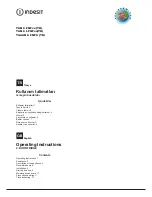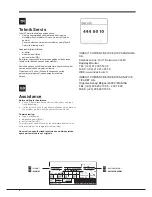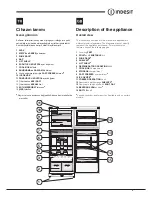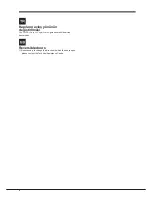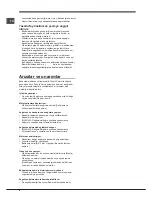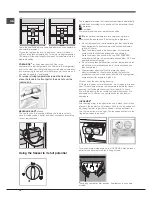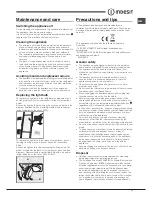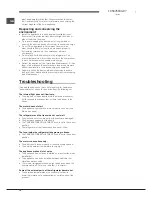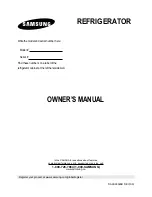
12
GB
must be separately collected. Consumers should contact
their local authority or retailer for information concerning the
correct disposal of their old appliance.
Respecting and conserving the
environment
• Install the appliance in a fresh and well-ventilated room.
Ensure that it is protected from direct sunlight and do not
place it near heat sources.
• Try to avoid keeping the door open for long periods or
opening the door too frequently in order to conserve energy.
• Do not fill the appliance with too much food: cold air
must circulate freely for food to be preserved properly.
If circulation is impeded, the compressor will work
continuously.
• Do not place hot food directly into the refrigerator. The
internal temperature will increase and force the compressor
to work harder and will consume more energy.
• Defrost the appliance if ice forms (see Maintenance). A thick
layer of ice makes cold transference to food products more
difficult and results in increased energy consumption.
• Regularly check the door seals and wipe clean to ensure
they are free of debris and to prevent cold air from escaping
(see Maintenance).
Troubleshooting
If the appliance does not work, before calling for Assistance
(see Assistance), check for a solution from the following list.
The internal light does not illuminate.
• The plug has not been inserted into the electrical socket, or
not far enough to make contact, or there is no power in the
house.
The motor does not start.
• The appliance comes with a motor protection control (see
Start-up and use).
The refrigerator and the freezer do not cool well.
• The doors do not close properly or the seals are damaged.
• The doors are opened too frequently.
• The TEMPERATURE ADJUSTMENT knob is not in the correct
position.
• The refrigerator or the freezer have been over-filled.
The food inside the refrigerator is beginning to freeze.
• The TEMPERATURE ADJUSTMENT knob is not in the correct
position.
The motor runs continuously.
• The door is not closed properly or is continuously opened.
• The outside ambient temperature is very high.
The appliance makes a lot of noise.
• The appliance has not been installed on a level surface (see
Installation).
• The appliance has been installed between cabinets that
vibrate and make noise.
• The internal refrigerant makes a slight noise even when the
compressor is off. This is not a defect, it is normal.
Some of the external parts of the refrigerator become hot.
• These raised temperatures are necessary in order to
avoid the formation of condensation on certain parts of the
product.
195076834.07
12/2012

